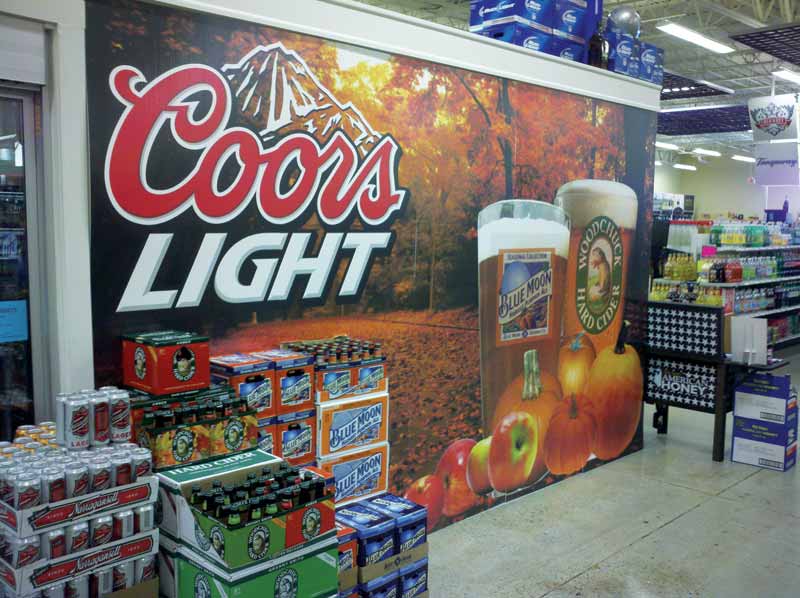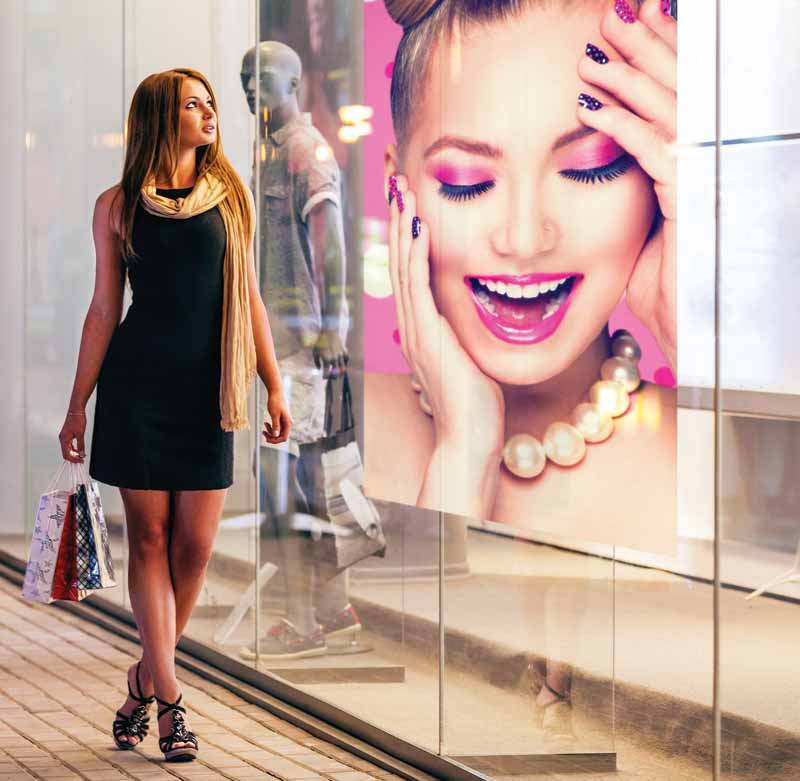By Shellie Terry
Some point-of-purchase (POP) graphics are printed for brief campaigns, but others must stand the test of time in bustling retail environments. There are a variety of ways to make them last, including thermal laminates for posters, face-mounting graphics to acrylic and choosing the right vinyl or fabric for banners.
Thermal laminates
Running to catch a plane usually leaves little time to browse the retail outlets in an airport, but there are inevitably layovers and delayed flights, when passengers end up meandering through the shops, beckoned by posters that entice them with deals and specials to motivate a purchase.
Hundreds of these posters and signs are printed every month by Paradies Lagardere Travel Retail’s operations centre in Atlanta, Ga., to be displayed at stores like Brooks Brothers in airports all across Canada and the U.S. While these signs are replaced each month, they still need to look good for the full duration of a 30-day campaign.
Wade Ervin, who heads up the company’s graphics jobs, uses a 1-m (42-in.) wide HP DesignJet Z6200 photo production printer and a 0.2-mm (8-mil) thick LexJet satin photo paper. This combination produces graphics that dry instantly and can be finished without much waiting time.
For finishing, Ervin uses a 0.08-mm (3-mil) thick ClearShield gloss ultraviolet-resistant (UV-resistant) premium low-melt thermal laminate on the back of the posters and a lustre version of the same product on the front. This is common practice to provide double-sided support while saving money. The lustre version enhances the front-facing graphics’ colour with minimal glare, while the gloss version is a less expensive way to protect the back. The resulting posters typically measure 0.4 x 1 m (16 x 42 in.) and are displayed in metal frames, which makes for a fairly sturdy display.
Thermal laminates are currently available in a variety of sizes, thicknesses and finishes for a similarly wide range of applications, from posters to banners to menu boards. They work well with any microporous coated paper or polyester substrate.
Face-mounting to acrylic
Another popular technique that can achieve a clean, modern look for photos and other printed graphics is face-mounting the images to acrylic. This approach has been perfected by print service providers (PSPs) for graphics displayed not only in retail spaces, but also in commercial buildings and residential homes.

In-store coolers require dimensionally stable graphic substrates that will not expand or shrink with variable temperatures.
“The thing about acrylic face-mounting is not all papers work well with it,” says Tate Dwinnell, who runs Bumblejax with his brother Corey in Seattle, Wash., which uses an e-commerce model to produce and ship graphics both locally and internationally. “Sometimes, the texture in the paper causes ‘silvering.’”
Silvering is a common problem where air bubbles captured between the lamination adhesive and the print surface cause silver specks to appear in the graphics. To avoid this, Bumblejax uses Sunset photo metallic paper for printing and CrystalClear permanent adhesive when mounting the graphics to acrylic.
“After testing several metallic papers, we found this one offers the best luminescence and dimensionality,” Corey says. “It really makes the images pop!”
Bumblejax creates and mounts graphics ranging from 152 x 152-mm (6 x 6-in.) squares to 2.4 x 1.2-m (96 x 48-in.) panoramas. After the prints are adhered to the acrylic, which ranges in thickness from about 2.5 to 25 mm (0.1 to 1 in.), the finished artwork achieves an almost three-dimensional (3-D) backlit appearance.
“It’s a sleek, modern esthetic,” says Tate. “It’s frameless and ‘floats’ from the wall, so you don’t see any hardware.”






